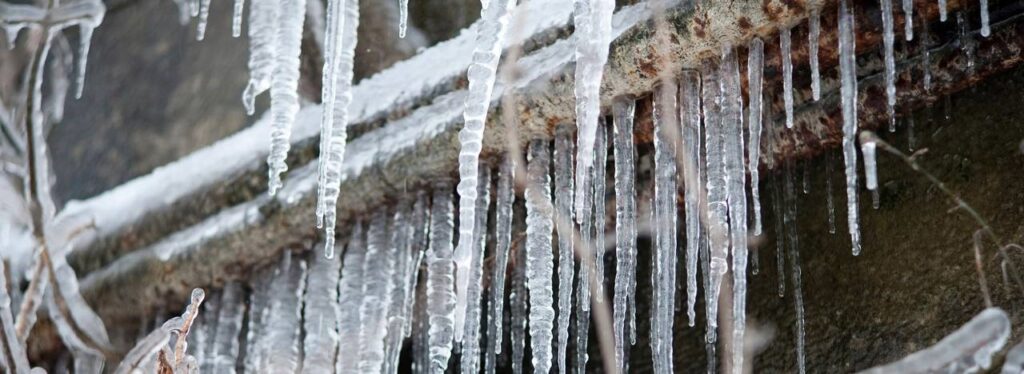Protecting Your Pipes from Freezing Issues: Essential Strategies
Protecting Your Pipes from Freezing Issues: Essential Strategies
Blog Article
The content which follows pertaining to How to prepare your home plumbing for winter weather is fairly stimulating. You should read it.

Cold weather can ruin your plumbing, specifically by freezing pipes. Right here's how to stop it from occurring and what to do if it does.
Intro
As temperatures drop, the danger of icy pipelines increases, possibly bring about costly repair services and water damage. Comprehending how to stop icy pipelines is important for homeowners in chilly climates.
Understanding Icy Pipelines
What causes pipes to freeze?
Pipelines freeze when revealed to temperatures below 32 ° F (0 ° C) for expanded periods. As water inside the pipelines freezes, it increases, putting pressure on the pipe wall surfaces and potentially creating them to burst.
Dangers and problems
Icy pipelines can lead to water interruptions, residential property damage, and costly repairs. Burst pipes can flooding homes and create extensive structural damages.
Indicators of Frozen Piping
Recognizing frozen pipelines early can avoid them from rupturing.
How to recognize frozen pipelines
Try to find reduced water flow from faucets, uncommon smells or noises from pipelines, and noticeable frost on subjected pipelines.
Avoidance Tips
Protecting prone pipes
Cover pipes in insulation sleeves or make use of warmth tape to safeguard them from freezing temperatures. Focus on pipes in unheated or exterior locations of the home.
Home heating methods
Keep indoor spaces sufficiently heated up, specifically areas with pipes. Open cupboard doors to allow cozy air to circulate around pipes under sinks.
Securing Outside Plumbing
Garden hoses and outside faucets
Disconnect and drain garden hoses before winter season. Set up frost-proof spigots or cover exterior faucets with insulated caps.
What to Do If Your Pipes Freeze
Immediate activities to take
If you think icy pipelines, keep faucets open to soothe stress as the ice melts. Make use of a hairdryer or towels soaked in warm water to thaw pipelines gradually.
Long-Term Solutions
Structural adjustments
Consider rerouting pipes far from outside walls or unheated areas. Include added insulation to attic rooms, basements, and crawl spaces.
Updating insulation
Purchase high-grade insulation for pipelines, attic rooms, and wall surfaces. Appropriate insulation assists preserve constant temperatures and decreases the danger of icy pipelines.
Verdict
Stopping frozen pipelines requires aggressive steps and fast actions. By recognizing the reasons, signs, and preventive measures, home owners can secure their plumbing throughout cold weather.
5 Ways to Prevent Frozen Pipes
Drain Outdoor Faucets and Disconnect Hoses
First, close the shut-off valve that controls the flow of water in the pipe to your outdoor faucet. Then, head outside to disconnect and drain your hose and open the outdoor faucet to allow the water to completely drain out of the line. Turn off the faucet when done. Finally, head back to the shut-off valve and drain the remaining water inside the pipe into a bucket or container. Additionally, if you have a home irrigation system, you should consider hiring an expert to clear the system of water each year.
Insulate Pipes
One of the best and most cost-effective methods for preventing frozen water pipes is to wrap your pipes with insulation. This is especially important for areas in your home that aren’t exposed to heat, such as an attic. We suggest using foam sleeves, which can typically be found at your local hardware store.
Keep Heat Running at 65
Your pipes are located inside your walls, and the temperature there is much colder than the rest of the house. To prevent your pipes from freezing, The Insurance Information Institute suggests that you keep your home heated to at least 65 degrees, even when traveling. You may want to invest in smart devices that can keep an eye on the temperature in your home while you’re away.
Leave Water Dripping
Moving water — even a small trickle — can prevent ice from forming inside your pipes. When freezing temps are imminent, start a drip of water from all faucets that serve exposed pipes. Leaving a few faucets running will also help relieve pressure inside the pipes and help prevent a rupture if the water inside freezes.
Open Cupboard Doors
Warm your kitchen and bathroom pipes by opening cupboards and vanities. You should also leave your interior doors ajar to help warm air circulate evenly throughout your home.

Hopefully you liked our post about How to Prevent Your Pipes From Freezing. Thanks a lot for spending some time to read through our post. Enjoyed our posting? Please share it. Let someone else check it out. We take joy in your readership.
Click On This Link Report this page